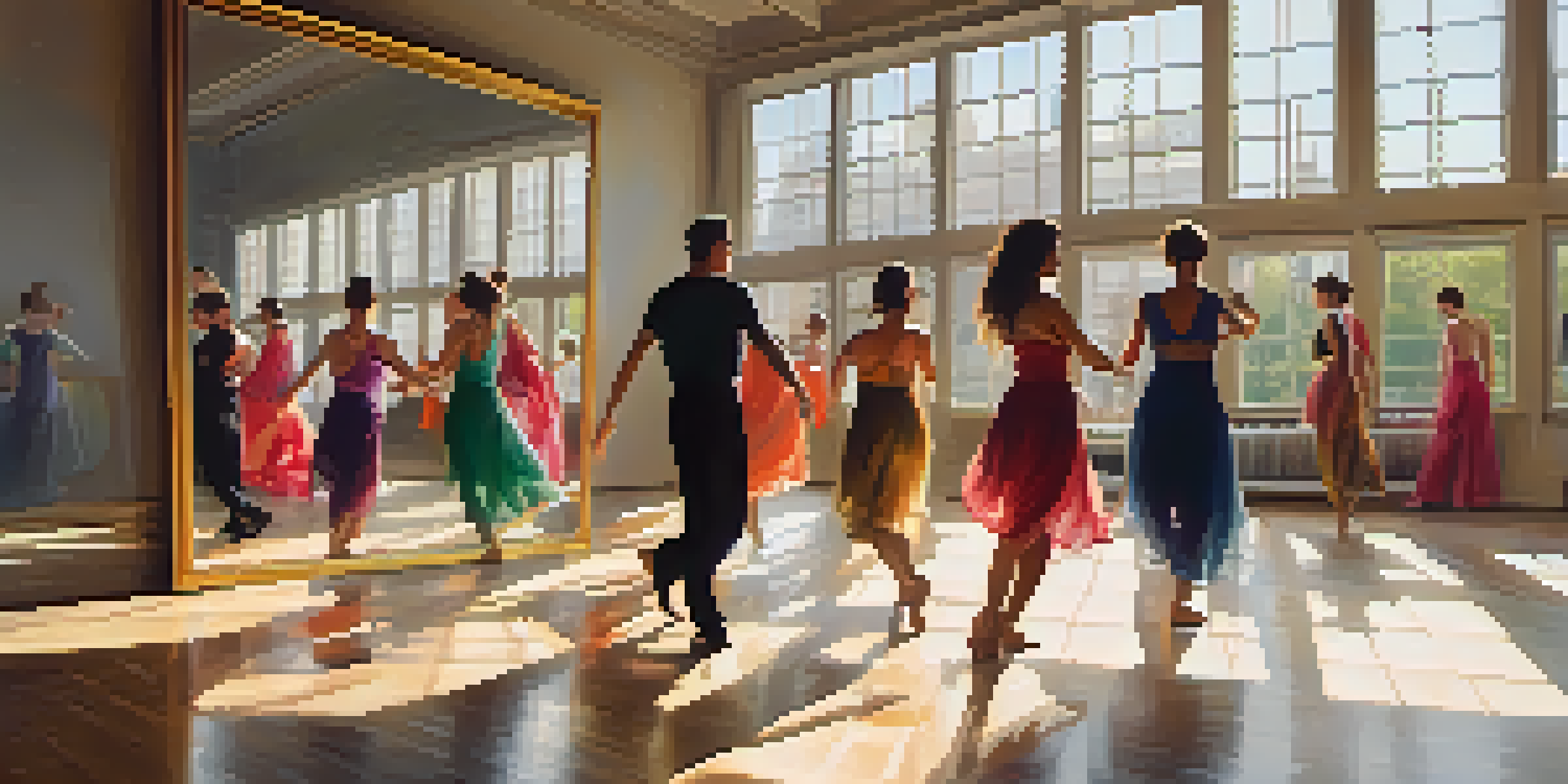Improvisation in Dance: A Key Element in Choreographic Creation

Understanding Improvisation in Dance
Improvisation in dance is the art of creating movement spontaneously, allowing dancers to explore their bodies and emotions in real-time. It serves as a playground for dancers, where they can experiment without the constraints of pre-set choreography. This freedom fosters creativity and encourages unique expressions that might not emerge in structured settings.
The Role of Improvisation in Choreography
Improvisation is a vital ingredient in the choreographic process, acting as a source of inspiration and innovation. Choreographers often use improvisational techniques to generate new movement ideas, which can later be refined and structured into a dance piece. By weaving improvisation into their practice, choreographers can tap into the dancers' authentic movements, enriching the overall performance.
Improvisation Enhances Creativity
Engaging in improvisation allows dancers to break free from their usual patterns, leading to unexpected and exciting movement discoveries.
Fostering Creativity Through Movement Exploration
Engaging in improvisation allows dancers to break free from their usual patterns, leading to unexpected and exciting results. For instance, when a dancer explores a new space or interacts with different music, they may discover movement qualities they never knew existed. This exploration not only enhances the dancer's vocabulary but also sparks fresh ideas for choreographers.
Improvisation Techniques for Dancers
There are various techniques dancers can utilize to enhance their improvisational skills, such as guided prompts, games, or partnering exercises. These activities encourage spontaneity and help dancers react instinctively to their surroundings. For example, a simple exercise might involve responding to a partner's movement, creating an organic flow of ideas and actions.
Improvisation Fuels Choreographic Innovation
Choreographers utilize improvisational techniques to generate new movement ideas, enriching their dance pieces with authentic expressions.
Collaborative Improvisation: A Shared Experience
Collaborative improvisation takes the concept further by inviting multiple dancers to create together, leading to a rich tapestry of movement. This interaction fosters a sense of community and trust among dancers, allowing them to explore new dynamics and relationships. The end result is often a more cohesive performance that reflects the collective creativity of the group.
Improvisation as a Tool for Problem-Solving
In the choreographic process, improvisation can serve as an effective problem-solving tool. When faced with creative blocks or challenges, dancers can turn to improvisation to unlock new pathways and solutions. By allowing the body to lead the way, dancers often find that unexpected ideas emerge, providing fresh perspectives on their choreography.
Emotional Connection Through Movement
Improvisation enables dancers to express complex emotions, creating performances that resonate deeply with audiences.
The Emotional Aspect of Improvisation
Improvisation also taps into the emotional core of dance, allowing performers to express feelings that may be difficult to articulate in words. This emotional connection can make performances more relatable and impactful for audiences. When dancers improvise, they often channel their personal experiences, creating a narrative that resonates on a deeper level.
The Future of Improvisation in Dance
As dance continues to evolve, improvisation will play an increasingly significant role in shaping contemporary choreography. Dancers and choreographers are embracing this element to push boundaries and redefine traditional forms. The future promises exciting possibilities, where improvisation becomes not just a tool but a fundamental aspect of dance creation.